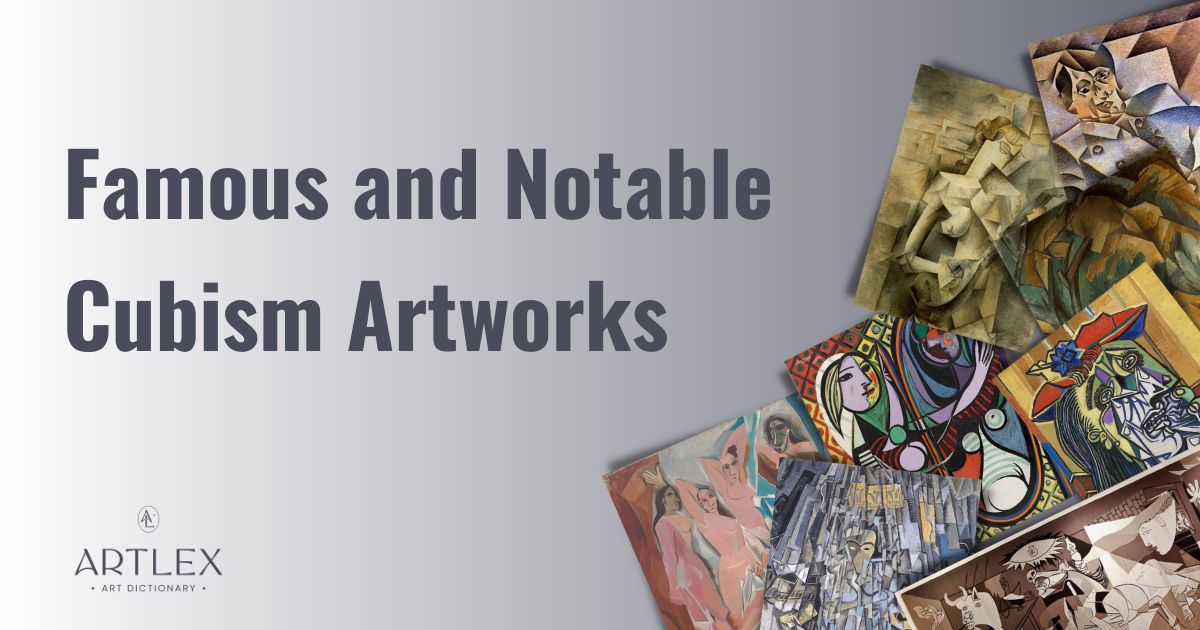
Cubism is a Western art movement that began around 1907 in Paris, France. Cubism was led by artists Pablo Picasso and Georges Braque, who experimented with form and perspective to achieve the fragmented composition that was pivotal to the movement. In 1914, much activity within the Cubist movement halted due to the First World War.
Examples of famous and notable Cubism artworks include:
1. Les Demoiselles d’Avignon, Pablo Picasso, 1907
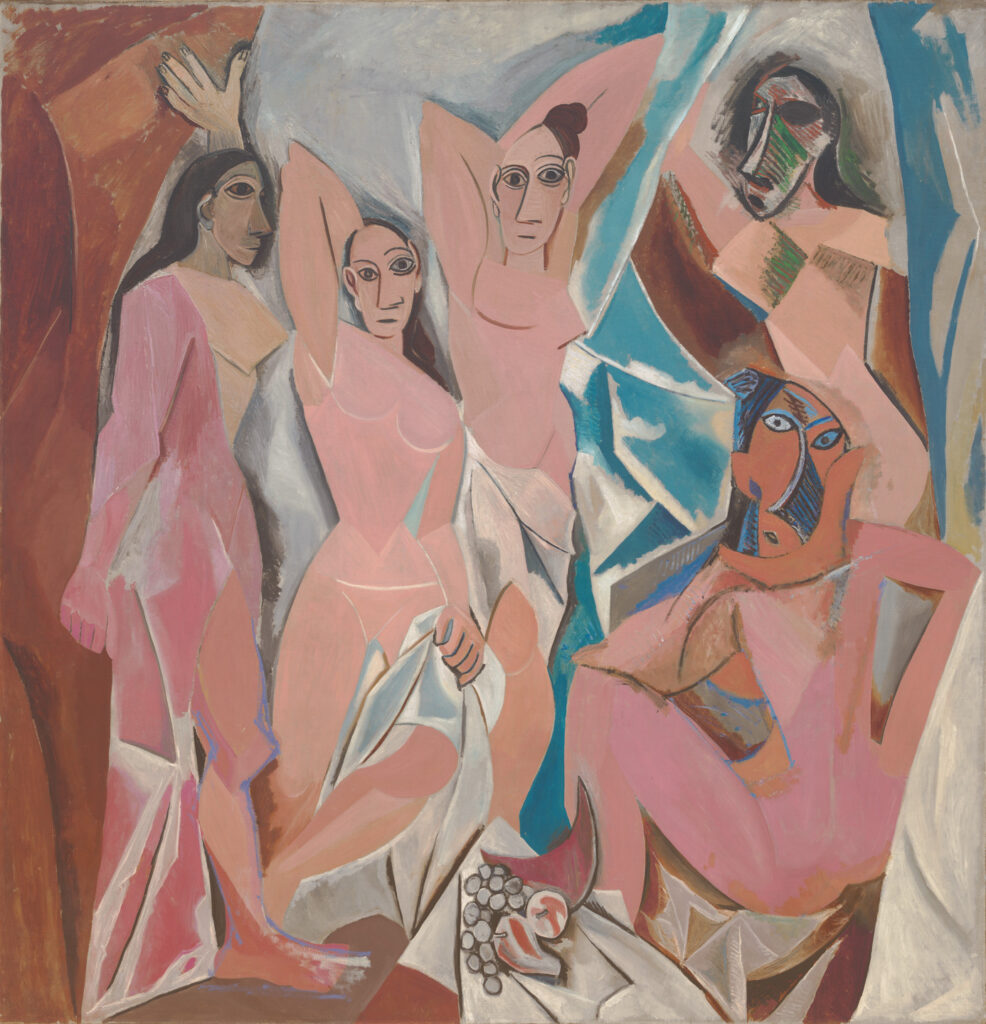
Pablo Picasso’s Les Demoiselles d’Avignon is among the earliest Cubist paintings and was very controversial for its style and subject matter. Les Demoiselles features five nude figures, assumed to be brothel workers, rendered with angular bodies and almost disjointed limbs on a flat, two-dimensional picture plane. Inspired by African masks and Iberian sculpture, Picasso adapts the Primitivist style to depart from traditional European painting.
2. Guernica, Pablo Picasso, 1937
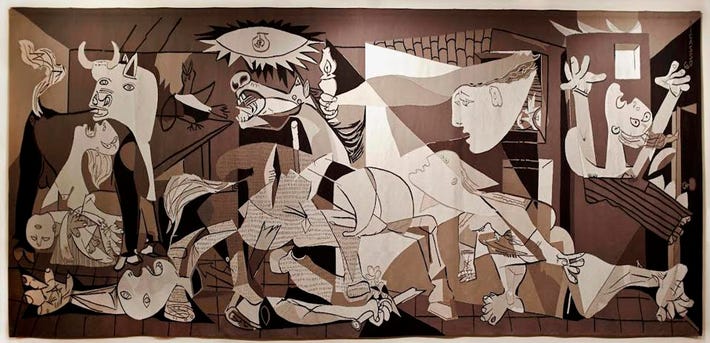
Guernica is one of Pablo Picasso’s most famous paintings for its powerful anti-war sentiments and graphic imagery. Picasso painted Guernica in response to the bombing of Guernica, a town in northern Spain, by Nazi and Fascist forces on April 26, 1937. The painting conveys the suffering brought upon the town by the violence and chaos of the Spanish Civil War.
3. Weeping Woman, Pablo Picasso, 1937
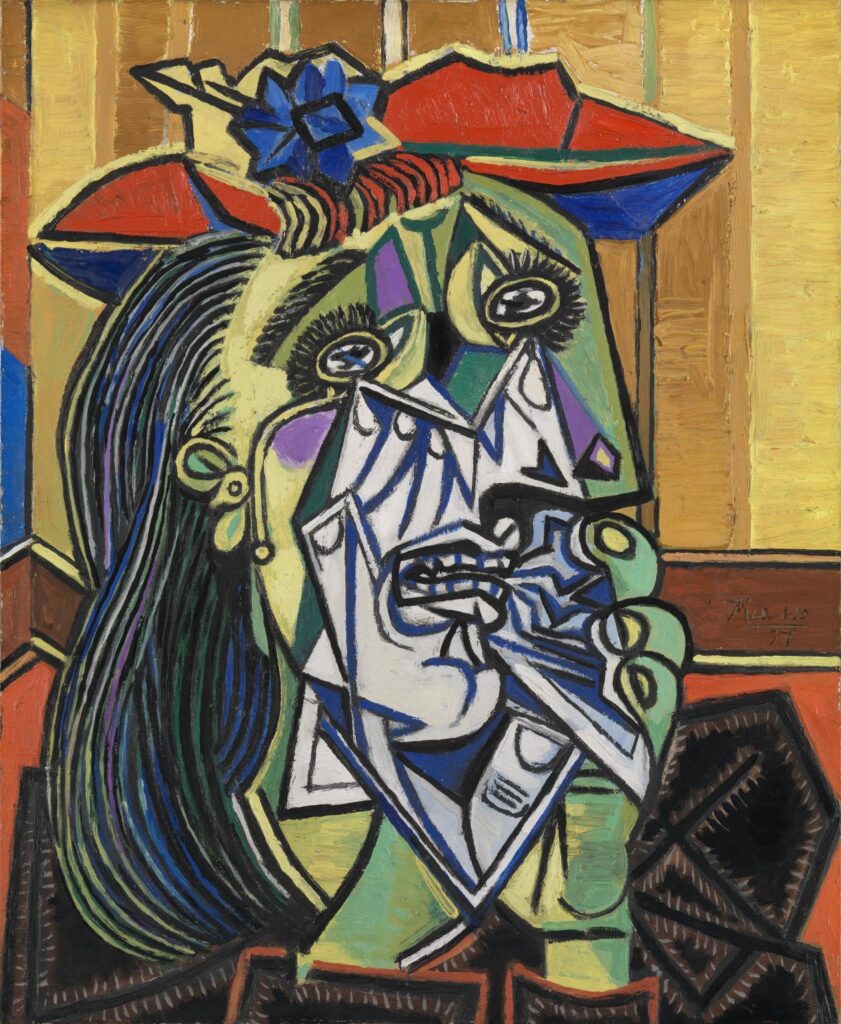
Pablo Picasso painted Weeping Woman in response to the bombing of the Spanish town of Guernica. The painting is based on the atrocities of war and the hundreds of people killed in the attack, specifically, a woman holding her dead child. This woman and child also appear in Picasso’s monumental anti-war mural Guernica (1937) and are painted using vivid colors and fragmented features reminiscent of Cubism.
4. Portrait of Pablo Picasso, Juan Gris, 1912
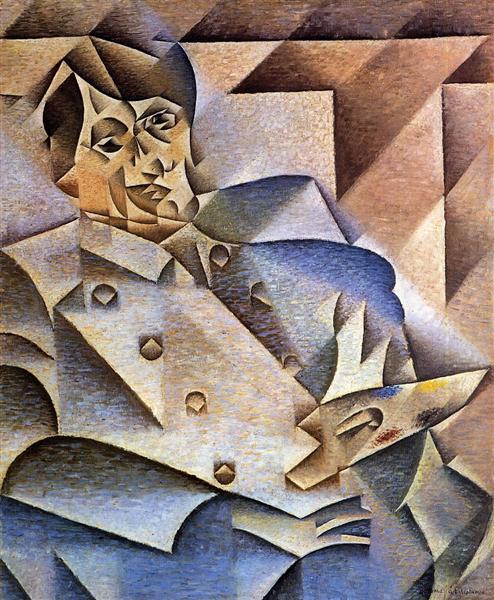
Portrait of Pablo Picasso by Juan Gris is painted in the style of Analytic Cubism, with its deconstruction of subjects, simultaneous viewpoints, and limited color palette. Gris depicts Picasso, an innovator in the Cubist movement, with a paint palette in hand. This homage to Picasso depicts him as a mentor to Gris and speaks to Gris’ position as an early and distinguished member of the Cubist movement.
5. Girl with a Mandolin, Pablo Picasso, 1910
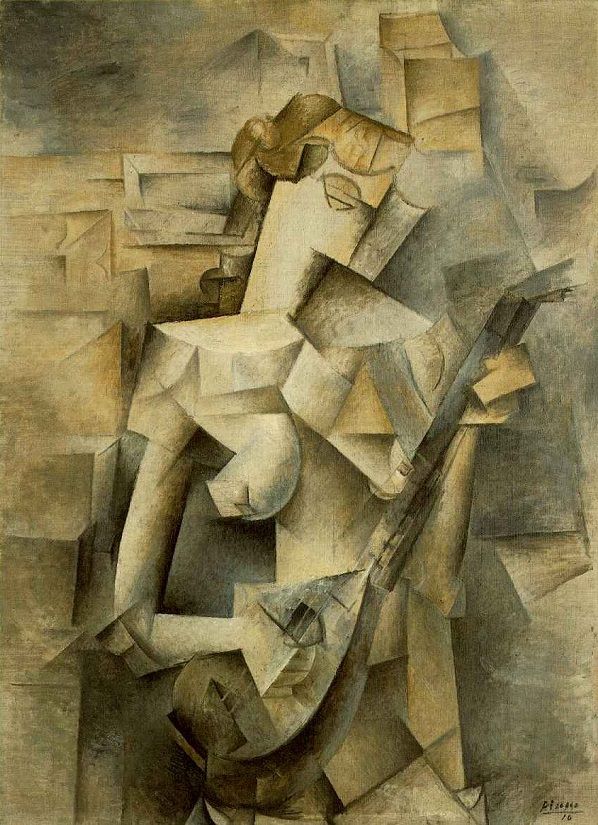
Pablo Picasso’s painting Girl with Mandolin is painted in the style of Analytic Cubism, known for its fragmented subjects, simultaneous viewpoints, and restricted color palette. In this painting, the subject is almost unrecognizable because of how heavily her appearance is fragmented. Picasso was not concerned with simply reproducing the image of a woman holding a musical instrument. Instead, he sought to evoke the objective nature of his subject, who still retains a hint of realism.
6. Still-Life with Chair Caning, Pablo Picasso, 1912
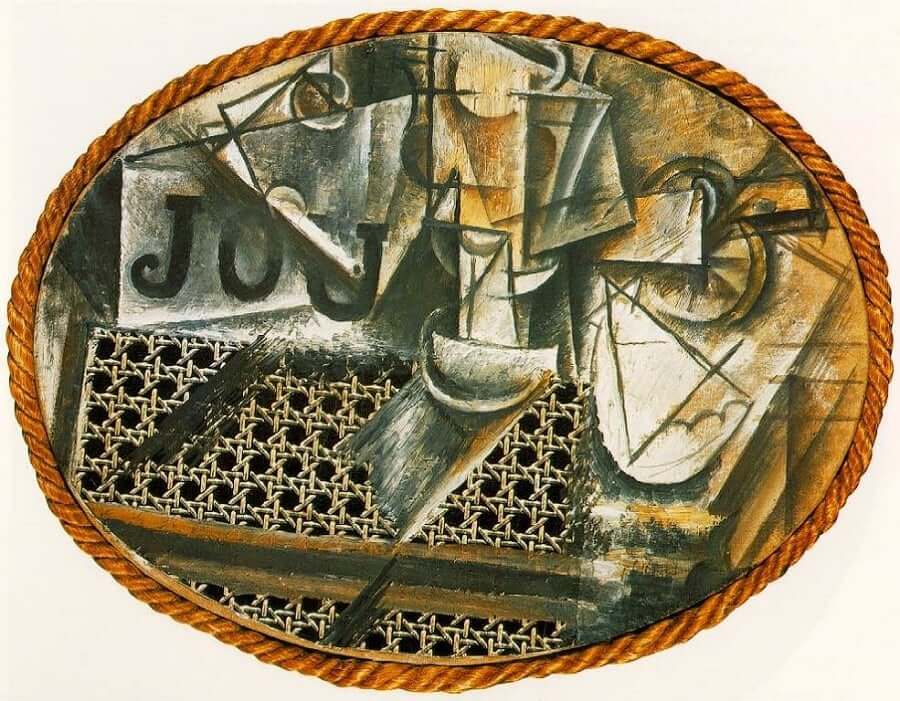
Picasso’s Still Life with Chair Caning is a mixed-media, Synthetic Cubism style artwork where a collage is created using oilcloth. Oilcloth was similar to modern contact paper and Picasso and Braque used it in their experiments in Cubism. Still Life with Chair Caning is among many Cubist works that represent the birth of collage. However, it was an unusual technique at the time. The papier collé technique rejected European painting conventions and contrasted “high-art” oil painting with “low” elements, usually everyday objects with little commercial value pasted directly onto the canvas. In many ways, Braque’s chance encounter with patterned oilcloth was revolutionary in the context of modern art.
7. Nude Descending a Staircase, No. 2, Marcel Duchamp
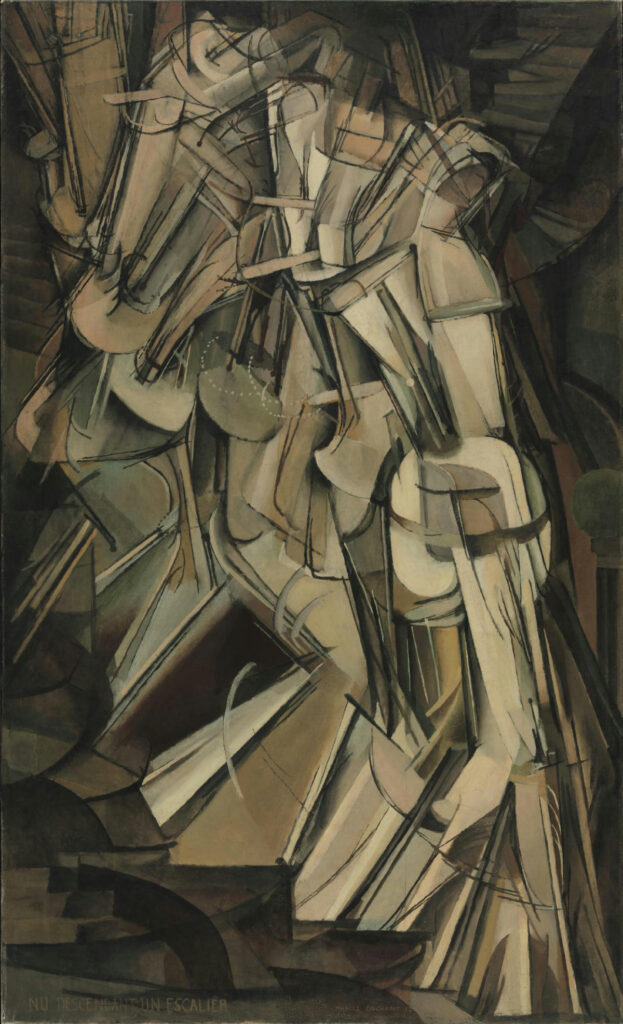
Marcel Duchamp’s Nude Descending a Staircase, No. 2, is a Cubist painting that shows a figure in motion; a nude descending a staircase. The figure is composed of conical and cylindrical elements that overlap and connect with arcs and broken lines to suggest movement and rhythm. Overall, the figure appears to merge into itself with every step it takes. Duchamp’s piece was initially rejected by Cubists for being too much like Italian Futurism, as Futurism focused on conveying subjects in motion, and Cubism typically depicted static subjects. Duchamp practiced in the style of Cubism for a while but never fully committed to the movement. Eventually, Duchamp became a leader in the Dadaist movement.
8. Girl Before a Mirror, Pablo Picasso, 1932
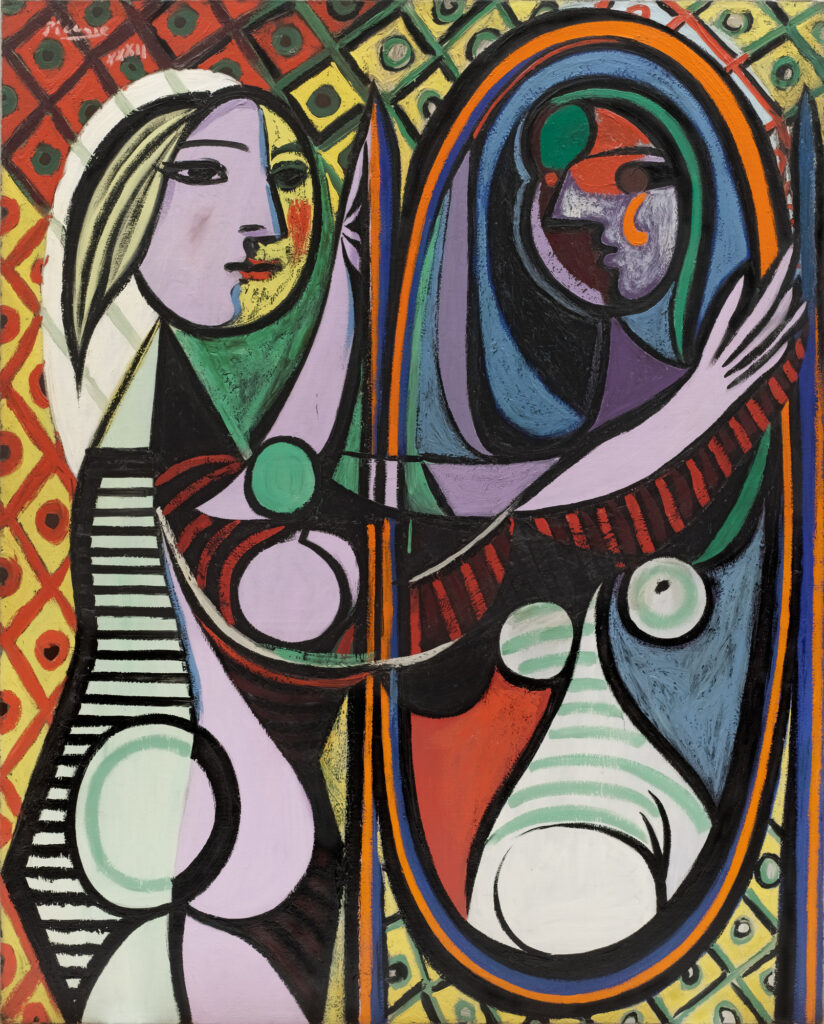
Picasso’s Girl Before a Mirror features a female subject and her reflection in a mirror. Picasso takes the classic theme of woman before her mirror and imbues it with color fields and symbolic shapes, creating a distinctly modern representation. Though World War I halted much of the Cubist movement in 1914, Picasso carried his distinct style into later phases of his artwork, including those created in the 1930s such as Girl Before a Mirror.
9. Cubist Self-Portrait, Salvador Dalí, 1923

Salvador Dalí’s Cubist Self-Portrait is a blend of Cubist and Purist techniques. Purism gained traction as a movement that claimed to refine the techniques of Cubism, in addition to being more intentionally aligned with abstraction. Though Dalí is typically known as a Surrealist artist, early in his career he made Cubist works for about five years.
10. Houses at l’Estaque, Georges Braque, 1908

The work Houses at l’Estaque was painted by Georges Braque, an innovator of Cubism. This painting is one of many depicting the village of l’Estaque, which was a popular subject among Impressionist artists, including Paul Cézanne, who later turned to Post-Impressionism. Cézanne’s geometric style inspired Braque and Picasso to develop the highly angular Cubist style. In 1908, art critic Louis Vauxelles saw Braque’s l’Estaque on display and commented that Braque reduced every element in his paintings to Cubes, which eventually led to the official label of “Cubism” many years later.
